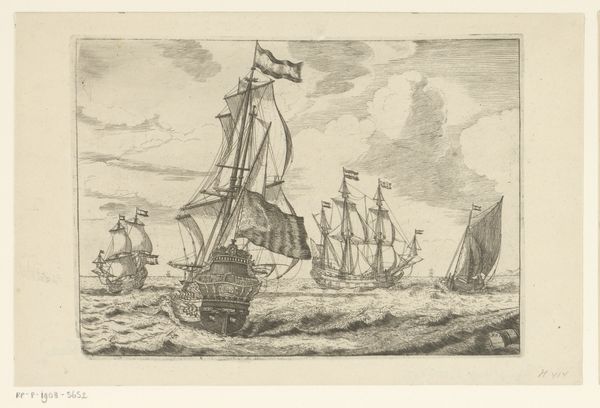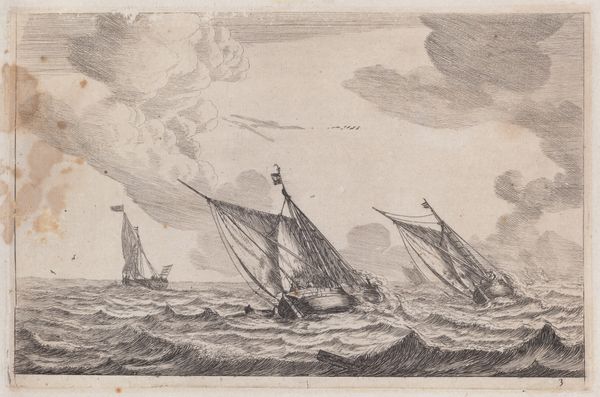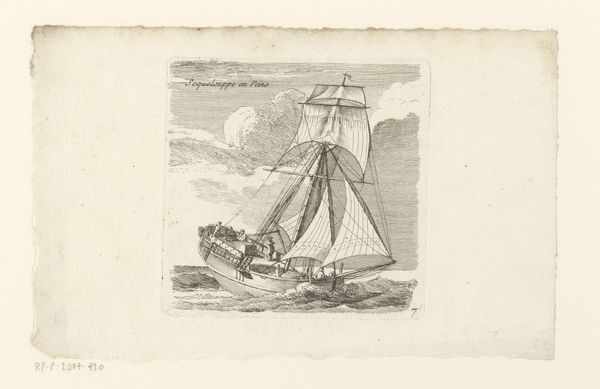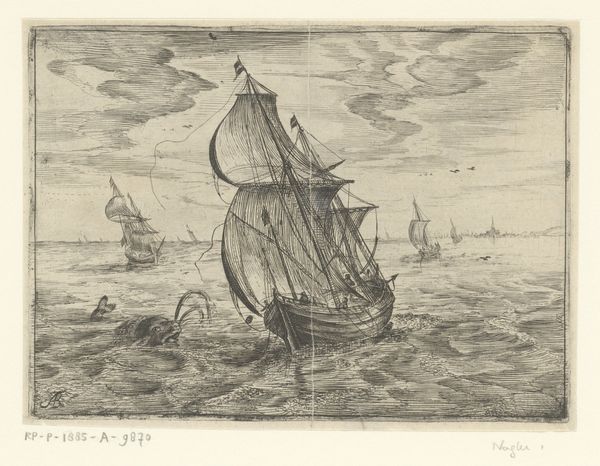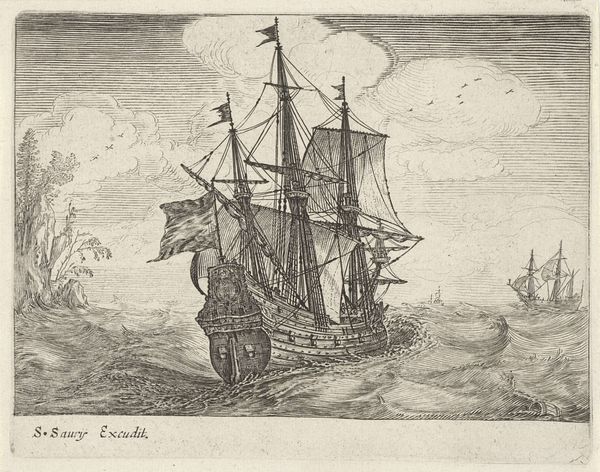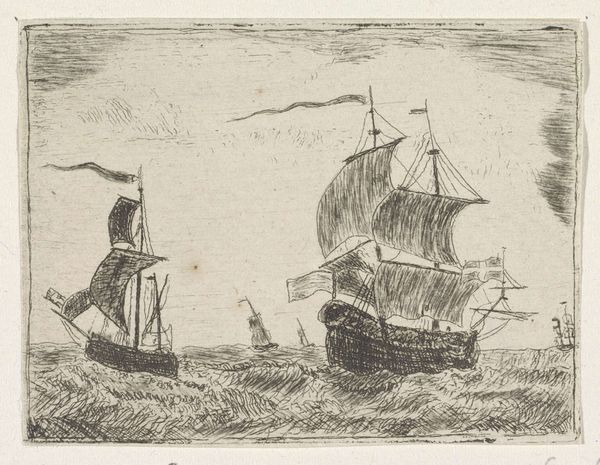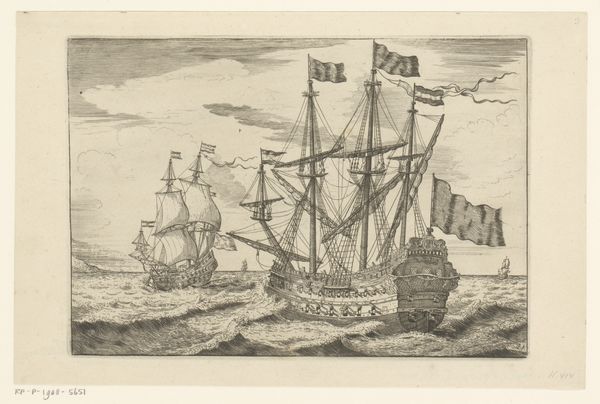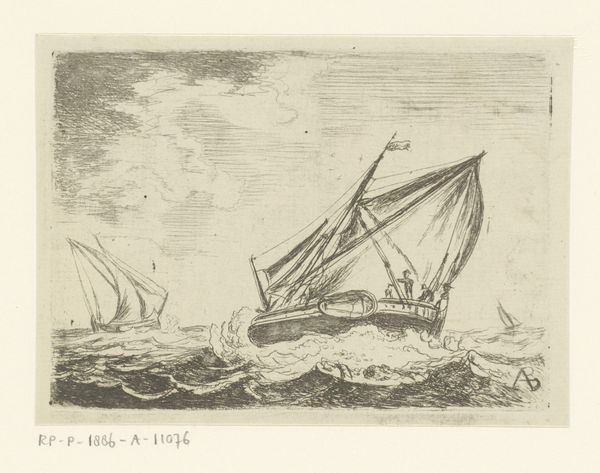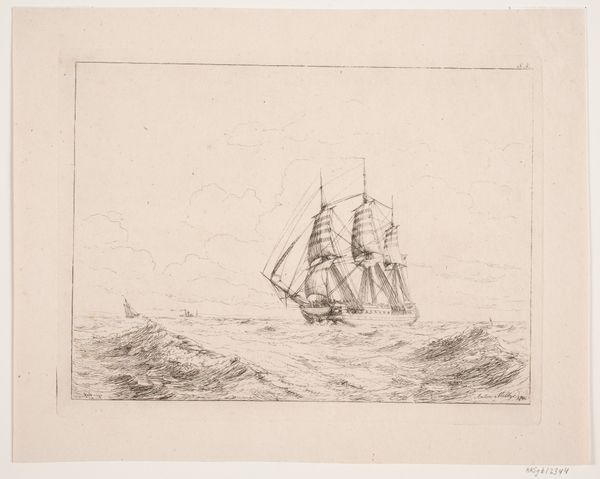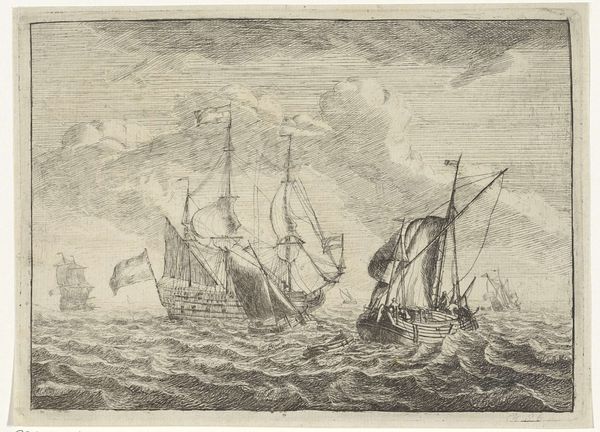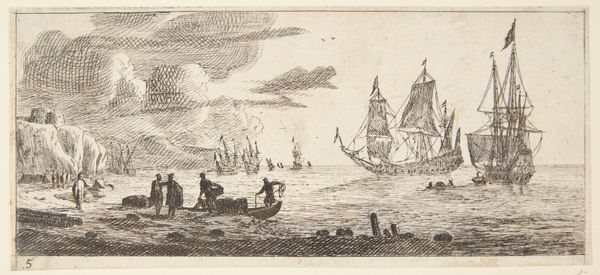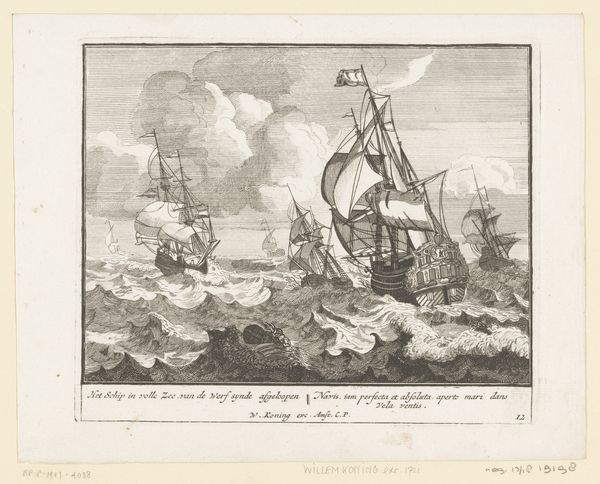
drawing, print, etching, paper
#
drawing
# print
#
etching
#
landscape
#
paper
#
line
#
realism
Dimensions: plate: 2 11/16 x 4 3/4 in. (6.8 x 12 cm)
Copyright: Public Domain
Charles Meryon created this print, The Galliot of Jean de Vyl of Rotterdam, using etching, a printmaking process dating back to the Middle Ages. Meryon began with a copper plate, covering it with a waxy, acid-resistant ground. Then, using a sharp needle, he drew the image, exposing the metal underneath. The plate was then immersed in acid, which bit into the exposed lines, creating grooves. Ink was applied to the plate, filling the grooves, and the surface wiped clean. Finally, paper was pressed against the plate, transferring the ink and creating the print. Notice the incredible detail Meryon achieved, from the intricate rigging of the ships to the turbulent waves of the sea. Etching allowed him to capture fine lines and textures with remarkable precision. But this wasn't merely a demonstration of skill. It was a commercial transaction. The market for prints like this one boomed in the 19th century, as the middle class rose to prominence, and began to clamor for collectible images. Meryon was skilled, but also trying to make a living. Considering the labor involved, we are reminded that even the most delicate work is entangled with wider economic realities.
Comments
No comments
Be the first to comment and join the conversation on the ultimate creative platform.
